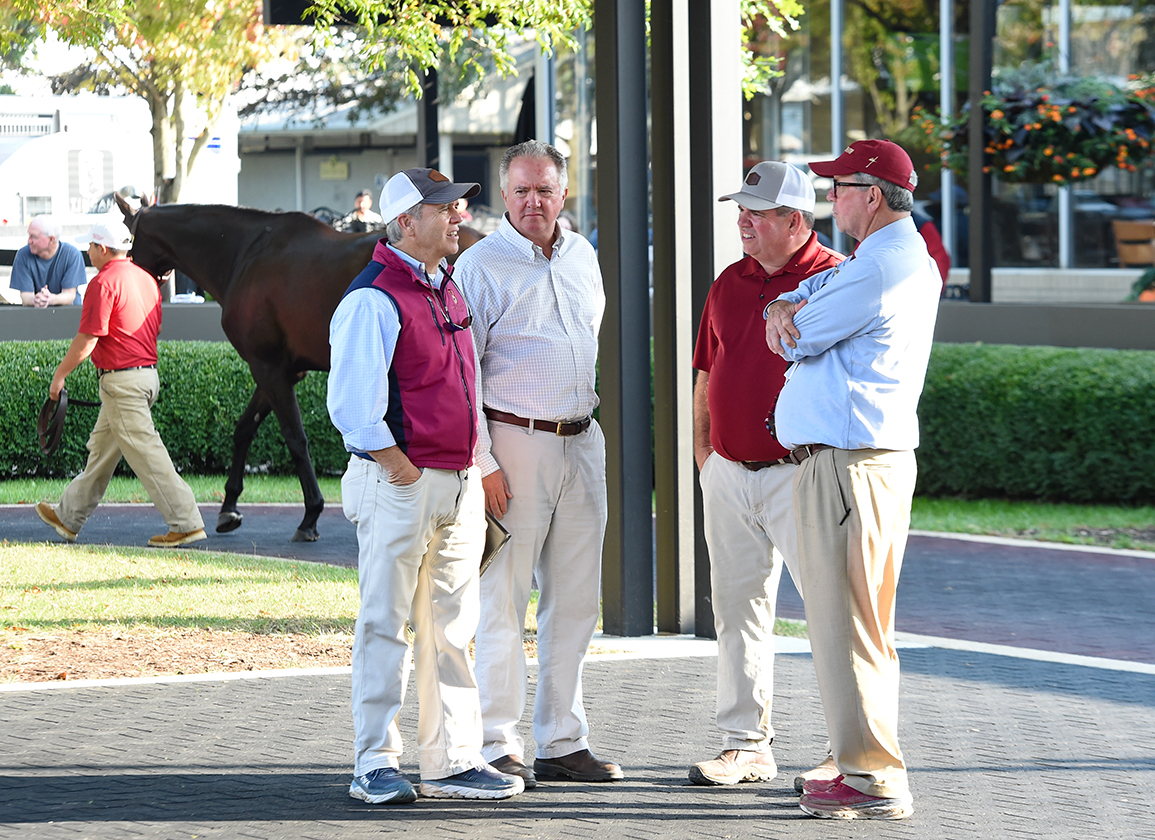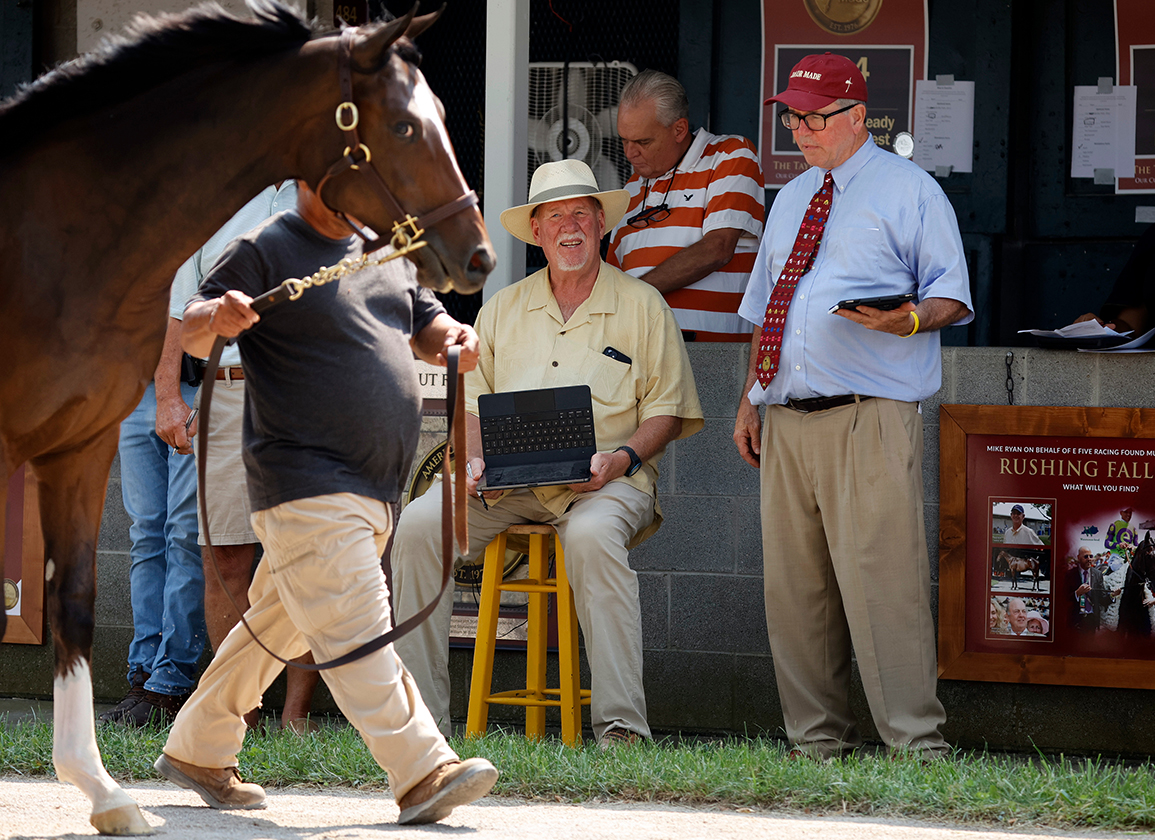In the long story of the breed, there has never been a week's work remotely approaching the one Mandaloun (Into Mischief) bids to complete in the desert on Saturday. It opened with his formal elevation as winner of America's most prestigious race; and could conclude with him banking the biggest prize anywhere on planet Turf.
As has come to seem wearyingly inevitable, nobody imagines that the first leg of this dazing double was necessarily concluded by the disqualification of Medina Spirit (Protonico). We proudly advertise the GI Kentucky Derby as sport's fastest two minutes, but after nine months the crucible has long since boiled over and extinguished the fires of excitement beneath. However fortunate Mandaloun has been, you have to feel a little sorry for the way his inherent merits are set in constant relief by the anger and then grief felt on behalf of another horse. The G1 Saudi Cup presents a pretty literal opportunity for his day in the sun.
That said, some of us sense a rather greater collective obligation to his old rival Midnight Bourbon (Tiznow), the athleticism of whose recovery in the GI Haskell S. last summer preserved not just his own limbs but our whole community from calamity. To this point, in fact, you could argue that Midnight Bourbon has been as inadequately rewarded for his level of ability, at two-for-14, as Mandaloun has disproportionately profited from his, remarkably having two Grade Is to his name without ever having passed the post first in a Grade I race.
(To listen to this column as a podcast, click below.)
Be that as it may, the Midnight Bourbon camp would doubtless settle for levelling things out when there happen to be $10,000,000 on the line, rather than the $90,000 they contested at Fair Grounds last month. Whatever happens, Midnight Bourbon has already shown enough to merit support in his next career, when he'll be charged with two precious legacies. For not only does he give fresh hope to the tenuous Man o' War line; he also, on the other side of his pedigree, carries a dual imprint of the Louisiana legend, 15-time stakes winner Monique Rene (Prince of Ascot)–both as his own fourth dam, and as granddam of his mother's damsire Yes It's True.
In just three years, the Saudi Cup has already managed to draw two horses with little or no precedent in Kentucky Derby history, in a promoted runner-up and a winner disqualified for interference. And once again it has drawn a field commensurate with the purse, in spectacular vindication of the kind of ambition we have long learned to expect from the hosts' neighbors on the Gulf shore. In surpassing even the G1 Dubai World Cup, this race has offered horsemen around the world a pretty unanswerable imperative to embrace the same, latent agenda of cultural outreach.
That's not always a straightforward equation, as soccer fans will tell you. In their recent acquisition of a Premier League club, Newcastle United, Saudi interests doubtless hoped to diversify a news agenda uncomfortably focused on human rights. Whatever the rights and wrongs of such strategies, at least sport keeps open lines of communication; and perhaps it can also assist those trying to direct a very different society toward wider engagement, often in contention with more insular voices. Certainly it feels a little unfair to expect delicate dilemmas of this kind to be resolved by people whose whole lives are immersed in the simple but all-consuming challenge of running brown quadrupeds in circles. Do we seriously expect rural stockmen to turn down the money, when corporate and political leaders with Ivy League educations often spend so long counting it that they forget all the questions they were originally going to ask?
Not that participation comes without cost even to the fabric of our own, introspective little world. Reverting to soccer for an analogy, the allocation of its most precious showcase to Qatar–to the scandalized indignation of millions–will this year require the World Cup to be moved from summer to winter, causing huge disruption to those domestic leagues that most nourish the passion of fans. In our own sport, similarly, these winter megaprizes (Pegasus/Saudi/Dubai) have not only caused great damage to such cherished heirlooms as the GI Santa Anita H. but also, with trainers today putting their horses on ever lighter schedules, diluted other storied races later in the year.
Human nature is such that all of us, however great or limited our competence and power, will sometimes fail the test when offered material gain for some compromise. But the whole point of sport, remember, is that it holds up the mirror to life. If the prize is big enough, there will always be people out there prepared to win at any price.
And actually that's why we have regulation. That's why, for instance, we need rigorous control of the spectrum where medication, ostensibly devised and prescribed on welfare grounds, drifts into the pharmaceutical stimulation of performance.
That drift can be so gradual, so barely perceptible, that the protagonists often maintain absolute conviction of their innocence. Quite where poor Medina Spirit fell, on this spectrum, will doubtless remain subject to indefatigable litigation. In the meantime his trainer has a chance to take Mandaloun down a peg or two with Country Grammer (Tonalist).
As it happens, this horse is an East Coast migrant to the Bob Baffert barn. There's no sign yet of any of his sophomore barnmates, being prohibited from earning Derby points, making that journey in reverse. As a result, Newgrange (Violence) will pass up 50 points if he wins the GII Rebel S., back at Oaklawn on Saturday, which is beginning to feel pretty serious.
Now nobody could sensibly pretend that Medina Spirit's positive test revealed a trainer prepared to win at any price. And it's absolutely his prerogative to fight his corner. But if Baffert is implicitly prepared to encourage his patrons to sit out the Derby, as though to pass some public test of character and fidelity, then he should think about the wider consequences.
It's not as though he would never again be sent a million-dollar yearling if he decided, for the good of the game, to take his 90 days on the chin and let everyone reset. Who knows, the break might even do him good, after all the stress he has undoubtedly endured over the last year.
As it is, in holding out so grimly, maybe he thinks he can diminish the Derby if two or three of the likely favorites are instead standing idle in their stalls in California on the first Saturday in May. Especially if he can pounce on the winner in the Preakness with a fresh horse.
The trouble with that mindset is that it makes Baffert bigger than the Derby. It would imply that he would rather come out of all this in front, even if all the mainstream coverage in Derby week, such vital oxygen for our sport, is consumed by the guy who isn't there, rather than those horses that enter the gate bearing the hopes and dreams of so many others in his community; even if the sport continues to be dragged through months and years of damaging courtroom headlines; even if each of “his” horses represent not just the investment of his wealthy patrons, but the life's work of their breeders and various others who have contributed to their development.
But you know what that looks like? That looks like someone who wants to win at any price. And I don't say that because he used some damned ointment.
The post This Side Up: Mandaloun Seeks to Gild New Crown appeared first on TDN | Thoroughbred Daily News | Horse Racing News, Results and Video | Thoroughbred Breeding and Auctions.








